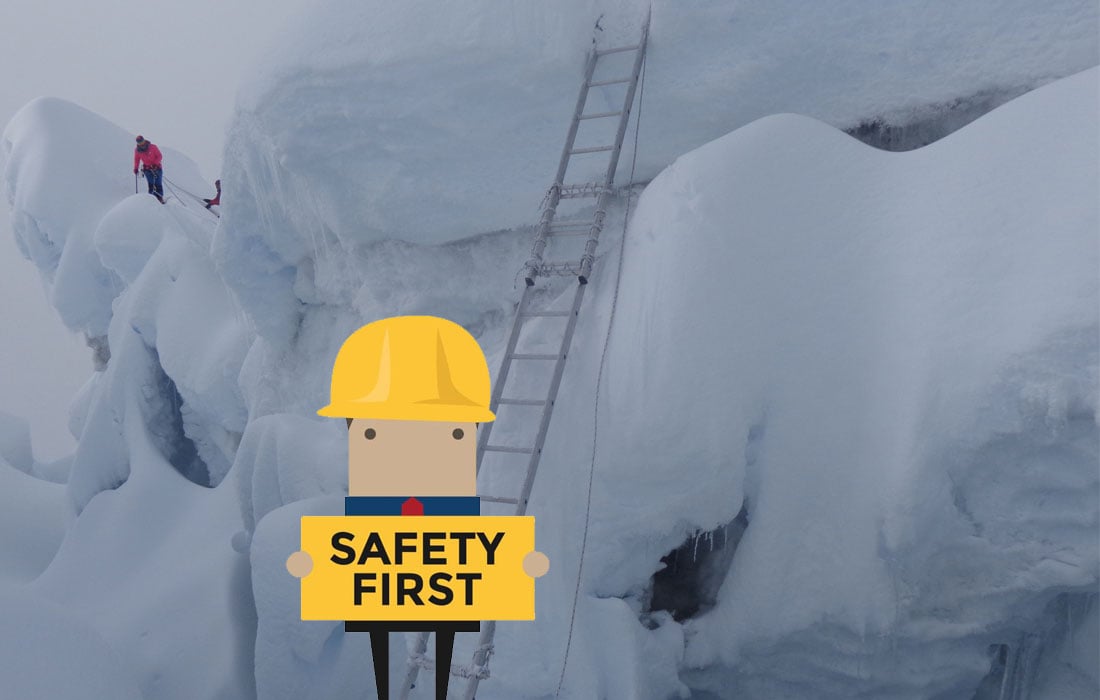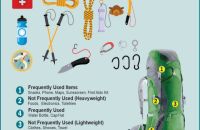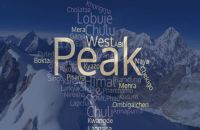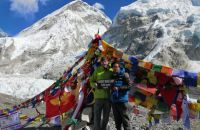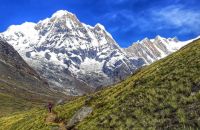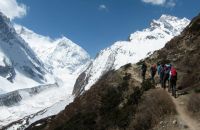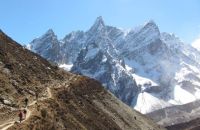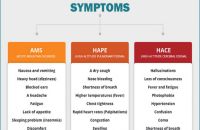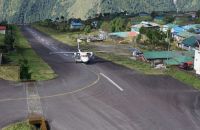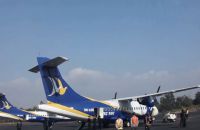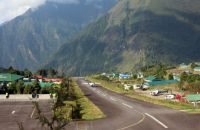Talk with our local travel specialist who can help organize your trip.
Nepal Travel Health And Safety
Table of Content
That said, any journey into high mountains anywhere in the world does carry a small element of risk and safety standards in Nepal are not always the equal to what you might be used to in your home country.
In this article, we look at how to travel around Nepal in safely.
Staying Healthy In Nepal – The Key Points
- Most people are surprised to discover that trekking through the mountains of Nepal generally presents few health and safety problems bar those presented by altitude, weather and stumbling on rocky tracks.
- Food poisoning and other tummy troubles aren’t as big an issue up in the hills and mountains as they are in Kathmandu, Pokhara and the lowlands.
- Malaria and Dengue Fever, both present in parts of the lowlands, are non-existent in the mountains.
Mountain Health And Safety
When planning a trekking trip to Nepal, if someone (normally this will be your mother!) tells you that it’s too dangerous, then the first thing you can assume is that they’ve never actually been trekking in Nepal. The reality is that done properly then there are few safer and healthier – not to mention more inspiring – ways of spending a couple of weeks of your life. But there are still some precautions to be taken and things you need to be aware of to ensure a safe and healthy Nepalese trek.
Acute Mountain Sickness (AMS)
The biggest threat to health and safety in Nepal’s mountains is Acute Mountain Sickness, otherwise known AMS or altitude sickness. This potentially fatal condition is caused by a combination of reduced oxygen and lower atmospheric pressure reacting with the body. Almost everyone who treks above 3000m will get mild symptoms of some sort such as a slight dizziness and headaches and difficulty sleeping. Normally it only lasts for a short time and is more a sign of your body adapting to the lower oxygen levels found at these altitudes rather than a specific health and safety issue. It’s very important to take it easy, walk slowly and never ascend above the recommended daily height. Drinking lots of water or ginger tea can help as well.
If symptoms persist or worsen and a strong headache and vomiting start to occur then it’s likely that moderate to severe altitude sickness is striking. The essential thing to do in this case is descend to a lower elevation as fast as possible – even if it’s the middle of the night. You might need to hire a porter to help carry the victim quickly down the mountain. Ignoring AMS can quickly lead to severe problems and even death.
There’s no rhyme or reason with how AMS strikes. We have spoken to a Sherpa who has summited Everest a number of times without problems, but once got severe AMS at just 3500m. And it doesn’t necessarily strike the old or unfit first. There is some evidence suggesting that young people – who tend to be more gung-ho and ascend too fast - get it easier than older people.
The golden rule with high mountain trekking is to go SLOWLY and never ascend too high, too fast. Above 3000m most experts agree that you shouldn’t ascend more than around 300-500m in a day and that you should allow for frequent rest days above 3500m (a rest day doesn’t actually mean having a rest. On these days it’s wise to hike to a higher altitude and then descend back down again to sleep). Following these simple rules will greatly reduce the chances of AMS.
Hypothermia
Hypothermia is not as common a safety risk as you might expect it to be during a trek in Nepal. But it’s certainly a risk for the under dressed and unprepared. Symptoms are pretty similar to those of AMS - slurred speech, loss of concentration and fatigue all being key signs. Get the victim into a warm place (wrap them in sleeping bags and use your own body heat if necessary) and give them hot drinks and food.
Sunstroke and Heatstroke
Sunstroke and heat stroke are both common. This is especially the case when walking all day in bright sunlight through the hotter, lower valleys and slopes. At such times try to rest in the shade, drink lots of water, eat something salty and wear a wide-brimmed hat.
Always, even at high altitude, wear lots of sun cream and sunglasses.
Travelling Around Nepal
Potentially the riskiest thing you can do in Nepal is actually travel around! When it comes to traveling by either road or air, Nepal’s safety rating is not exactly envious.
By Road
A combination of narrow, winding and often poorly maintained roads, combined with very lax road safety standards and vehicle maintenance, plus an utter disregard for rules about not overtaking on blind corners or into on-coming traffic means that every time you hop on a bus or get in a car in Nepal you’re taking a significant safety risk. On top of all this, mountain roads present the added dangers of frequent rock falls, landslides, ice and terrifyingly steep drop-offs.
To minimize risk the best advice is to hire an experienced driver and well-maintained car through a reputable tour company.
By Air
Traveling by road is often a time-consuming and risky prospect so many travelers to Nepal take advantage of the comprehensive internal flight schedule. The problem is that Nepalese airlines have a dismal safety record. Nepalese pilots are generally very good (slaloming a plane in poor weather between Himalayan giants means bad pilots don’t stay in the job long), but a combination of old and poorly maintained planes and extremely challenging flying conditions mean that statistically, Nepal is one of the most dangerous countries in the world in which to board a plane. At the trail head for the main Everest treks, the popular flight to Lukla is especially renowned with the airstrip there being considered one of the most dangerous commercial airstrips in the world. That said, despite Nepal’s poor flight safety record, flying is still statistically safer than traveling by road.
Eating
Many first-time visitors to Asia are naturally concerned about getting an upset stomach from eating something that doesn’t agree with them. With food hygiene standards that might be below those you’re used to at home there’s no denying that this is a common problem. However, most upset stomachs are nothing to worry too much about and its often just a result of a dramatic change of diet rather than actual food poisoning. The risk of an upset stomach from food or water is heightened in the April to June hot season and the risk is always greater in the hot lowlands where famous wildlife parks such as Chitwan are located. High up in the mountains, where nature itself acts as a giant deep freeze and flies are fewer, you’re less likely to get sick, but it still pays to be careful of what you’re eating.
And remember, only drink treated water. We recommend bringing your own water treatment system. An especially good system for hikers and those traveling are LifeStraw (lifestraw.com). We’ve used them throughout the Himalaya and South Asia and parts of Africa, Latin America, and hiking trips in Europe and never had any trouble with contaminated water.
Vaccinations
There are no vaccinations that are compulsory for travel to Nepal (though that might change if and when a vaccination for Covid-19 is found), but you should ensure that all your standard vaccinations such as tetanus are up to date.
Insurance
Only a fool would travel to Nepal without a comprehensive travel insurance policy. If you’re coming to Nepal with the intention of trekking then it’s vital that you check that your policy covers trekking at high altitudes (many policies have a limit of 3000m or less, which won’t get you far in Nepal). You should also confirm that your insurance policy is valid for Nepal as a growing number of insurance companies are refusing to cover travel to Nepal.
- Written by: Stuart Butler
- Updated: Friday May 4, 2018

